Chapter 4, Part 23
On the day we left the southwest Sri Lankan port of Galle for Kandy, I was still recuperating from a persistent cough. It was a result of the fast boat journey we took from the Bandas to Ambon, then the flights from Ambon to Makassar, Makassar to Kuala Lumpur, and eventually Kuala Lumpur to Colombo, as well as our short but distressing stay in Hikkaduwa, leaving both of us in a sleep-deprived condition when we arrived in Galle two days earlier.
We had to take the train to Colombo before changing to another train going to Kandy since there was no direct railway connecting Galle and Sri Lanka’s second largest city. After the train arrived at Galle station and some passengers disembarked, droves of travelers – foreign tourists and locals alike – climbed into the carriages. With two backpacks each, we were trying to find seats for us without knocking someone down as the cars were jam-packed with people. Amid the jostling, I was pleasantly surprised to see independent Mainland Chinese tourists willing to take such an uncomfortable form of local transportation, contrary to their stereotype as pampered, group-travel only tourists. Traveling does help us fight stereotypes, doesn’t it?
Taking a train ride in Sri Lanka always makes me a little anxious – thanks to the nerve-wracking experience I had back in 2012 on my very first trip to the country – and this one was no different. We had booked second class tickets one day prior to our date of departure. However, aboard the train we found out that all second class seats were occupied. An officer noticed our confusion and offered us to be seated on the third class instead. The train was about to depart, and getting proper seats instead of having to stand all the way to Colombo far outweighed the hassle of demanding an explanation for the situation.
We jumped off the second class carriage and hopped on the one the officer pointed out. He guided us through a packed aisle and walked toward the end of the car where two empty seats were available, just enough for us and our baggage. With more passengers on board, the third class carriage certainly felt very cramped and claustrophobic. To my left was a guy who midway between Galle and Colombo grinned and asked me for water, meanwhile the person sitting next to the man across me offered us some crackers and cream soda. Hot, humid, crowded, but friendly, it was reminiscent of Indonesian economy trains more than ten years ago.
After stopping over at Colombo Fort station for a few hours, we took a more comfortable train to Kandy, our final destination. As the train moved deeper and higher into Sri Lanka’s mountainous interior, a magnificent landscape of undulating verdant hills unfolded before my eyes. A towering gigantic rock with a flat summit, reminding me of Sigiriya in the country’s Cultural Triangle, was as imposing as I had remembered. Not long after sunset, we finally arrived in Kandy. Located 500 meters above sea level, Kandy was considerably cooler than Galle and Colombo. The city once served as the capital of the Kingdom of Kandy, which since the end of 16th century was the sole independent native kingdom on the island. It ensured its survival by forging alliances with foreign forces – from the southern Indian dynasty of the Nayaks, to the Portuguese and the Dutch – to subdue their common rivals. In the early 19th century, however, the Kingdom of Kandy eventually succumbed to the British, marking the end of the island’s last independent kingdom.
We had planned to make Kandy our base to explore Sri Lanka’s cultural heritage, including Anuradhapura and Polonnaruwa, hence our decision to stay for eight days in the city. Located on the third floor of a multi-story apartment building a little outside the city center, our one-room only guesthouse was managed by husband and wife Mahesh and Achini, who were both P.E. teachers. They rented the remaining rooms on the same floor while taking care of their guests. The landlords themselves lived on the ground floor.
Not only was Achini among the warmest and most helpful hosts throughout our six-month trip, but she was also a chef extraordinaire. During our stay, she prepared a great variety of Sri Lankan delicacies: pol roti (coconut flatbread) and onion sambol (made with onion, turmeric, curry leaves, tamarind, chili flakes, and umbalakada – cured bonito from the Maldives) for breakfast; beetroot, chicken, and jackfruit curries, also gotukola sambol (made with pennywort, red onion and grated coconut) for dinner; as well as refreshing wood apple juice and silky smooth milk tea made with Sri Lanka’s own Dilmah brand. Her freshly-made wood apple juice was a revelation after my bad impression of the juice back in 2012, and her milk tea still is the best I’ve ever had.
When we were not venturing into the island’s Cultural Triangle, we explored ancient Buddhist temples around Kandy. On our second day, Achini hailed a well-mannered and soft-spoken rickshaw driver who would take us to three temples which Mahesh described the night before as “wood temple, stone temple, and wood-stone temple.” The first was Embekka Devalaya, also known as Sri Katharagama Maha Devalaya, a 14th-century temple built as a place to worship an ancient Sinhalese king. According to an old man who guided us through the temple, there were no less than 540 carved panels adorning parts of this centuries-old heritage building.
The second temple we visited was Lankatilaka Vihara, built by King Bhuvanekabahu IV in the mid-14th century, which is depicted on the obverse of the 500 Sri Lankan rupee banknote. Located on top of a rock where stairs were carved into its slopes, the Buddhist temple’s white facades concealed the intricate frescoes adorning the inner sanctum. At the back of the main edifice, a smaller shrine housing images of deities associated with Sri Lankan Buddhism stood testament to a time when Hinduism influenced Buddhist teachings on the island. Upulvan, believed to be the protector of Buddhism in the country, was depicted in the shrine as a four-handed deity with a blue complexion – very similar to the image of Vishnu, one of the chief deities in Hinduism.
The last of the temple trio we went to was Gadaladeniya Vihara, built by the same king who commissioned Lankatilaka Vihara. Due to the ongoing renovation works at the temple at the time of our visit, we decided to go to an office at the temple’s compound where we met a man who said he was an artist taking part in the restoration works. He explained that here at the temple, the Buddha was depicted alongside kinnura (Sri Lankan version of kinnara, celestial beings in Hindu cosmology), another evidence of the incorporation of Hindu aspects into the teachings of Buddhism during the reign of King Bhuvanekabahu IV.
On the fourth day of our stay in Kandy, we finally went downtown where everything looked and felt so familiar to me: with the artificial lake and its fountain, the supermarket where I tried wood apple juice for the first time, and all the colonial buildings around the lake, nothing had really changed. Sri Dalada Maligawa (Temple of the Tooth) at the heart of the city was our destination the day after. Not only is it the focal point of Kandy, but the temple also houses a relic of the Buddha’s tooth, making it among the most important and revered temples for Sri Lankan Buddhists. Due to its symbolism, the temple was targeted by the LTTE rebels (Tamil Tigers) in 1998 who fought against the largely Buddhist Sinhalese community until 2009, 26 years after the first conflict erupted. Sri Lanka is now at peace, but as is the case with other places recovering from the wounds of war, challenges remain.
From our balcony at the guesthouse, when we were not exploring the country’s impressive ancient sites, we marveled at a verdant hill peppered with several white buildings. Birds and squirrels frolicked in the trees, seemingly unconcerned by the presence of humans watching them in delight. While sipping Achini’s perfectly brewed milk tea – not overly sweet, but so rich in taste – we were awestruck by the afternoon skies over Kandy which changed color into blazing orange one day, and vibrant purple the next. Before dark, thousands or even millions of bats left their nests at Peradeniya Botanical Garden – a 19th-century creation of the garden-loving Britons some 5 km to the west of Kandy – flying eastward to forage for food. It was blissful moments like these that characterized our stay in this peaceful city.
Click here for the full list of stories from the Spice Odyssey series.
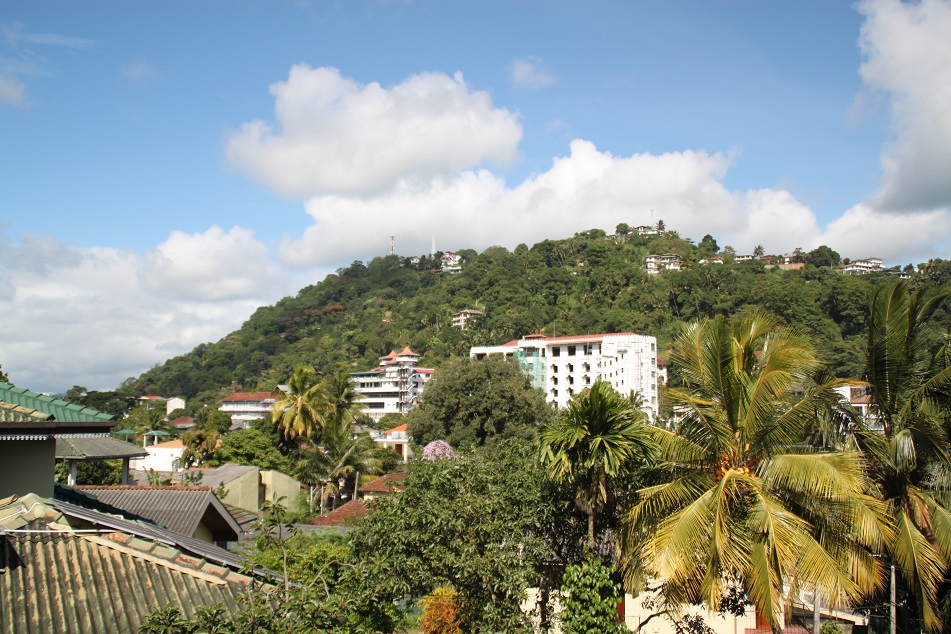
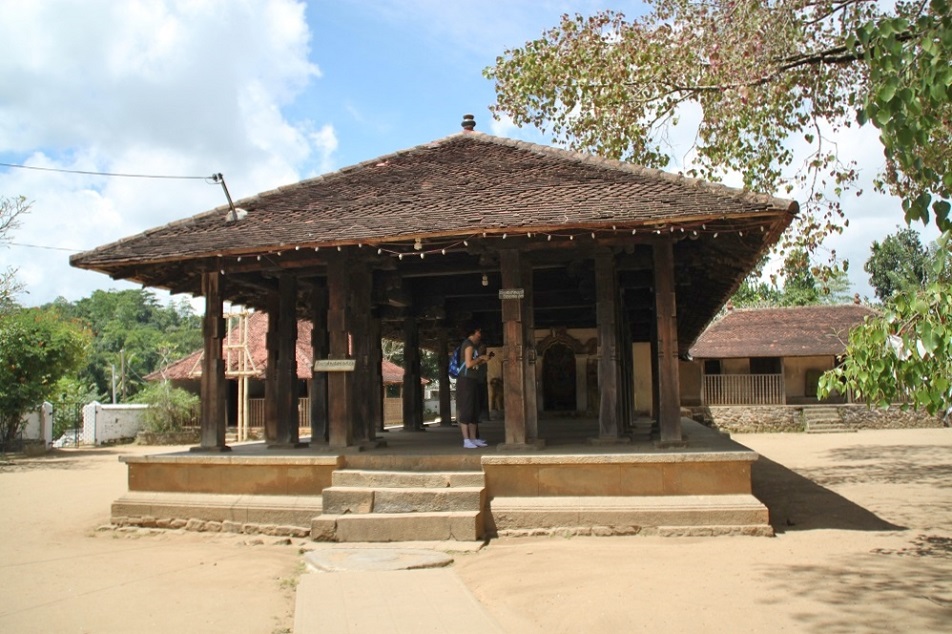


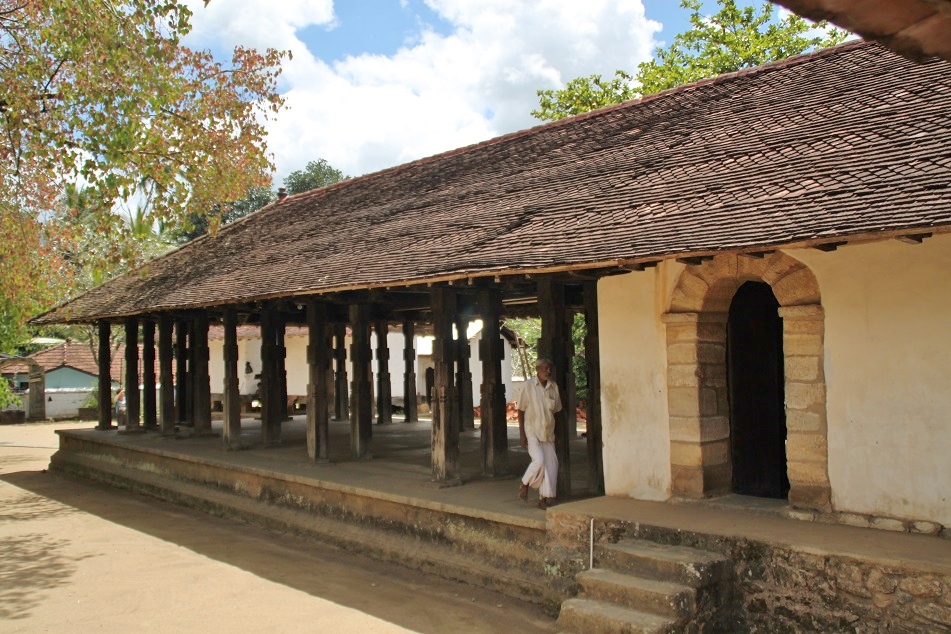


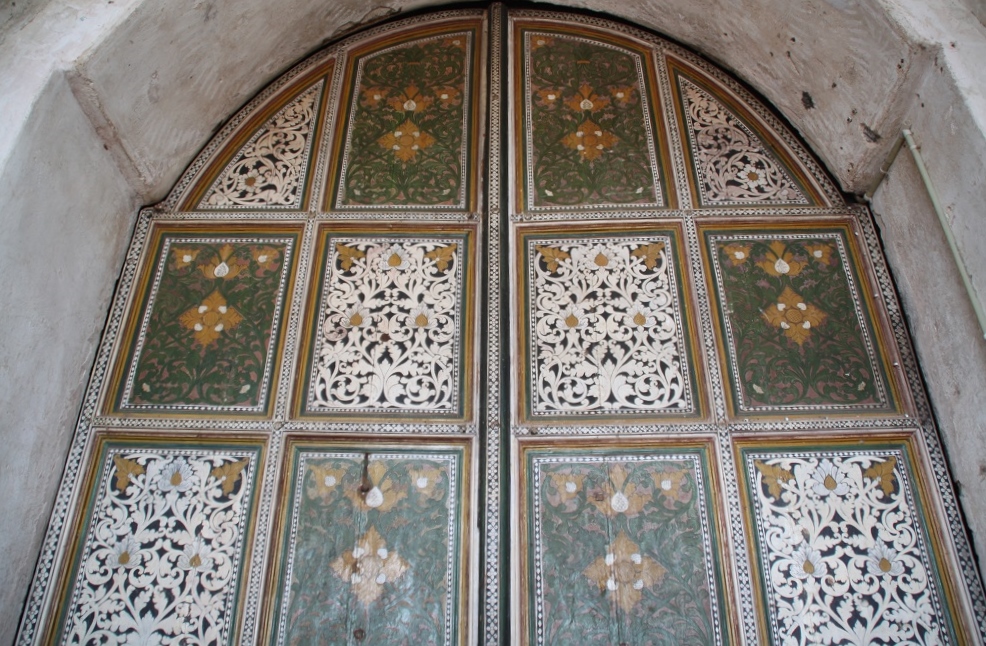


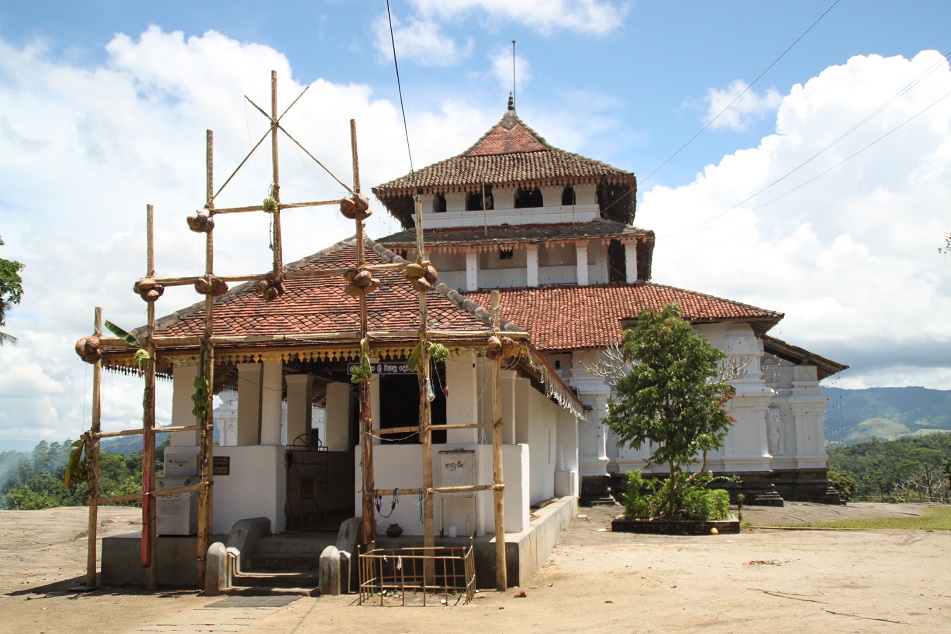
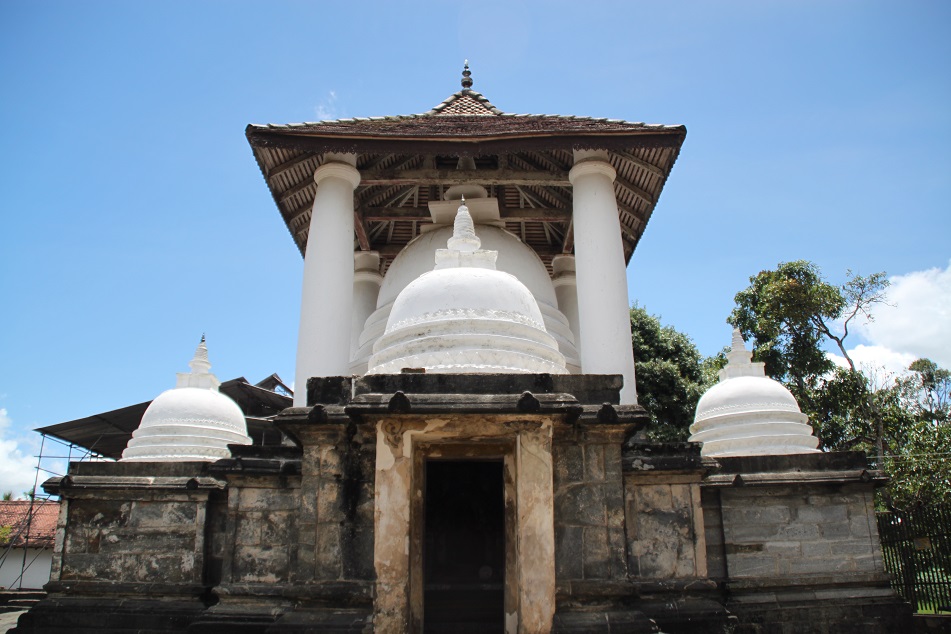
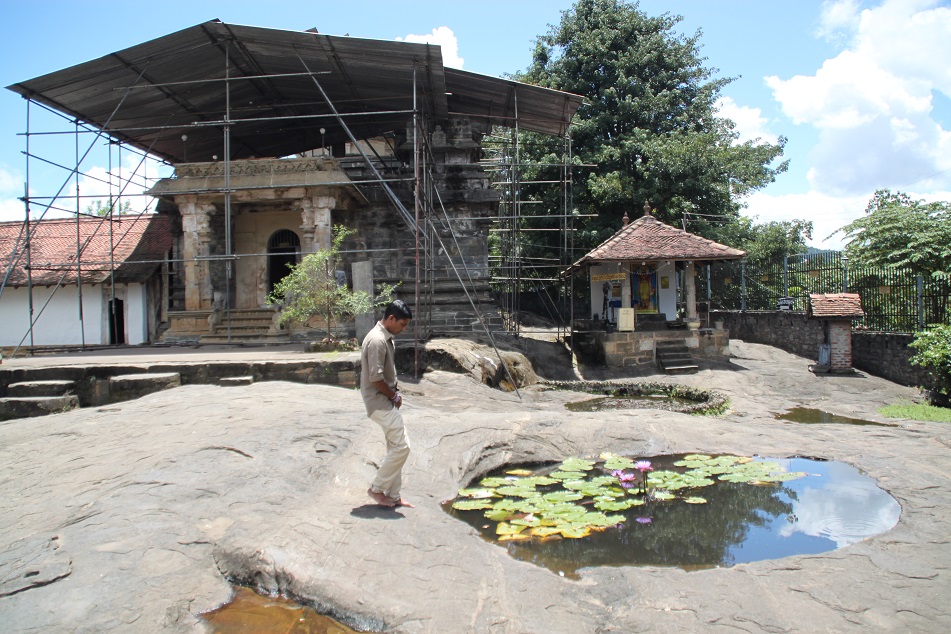
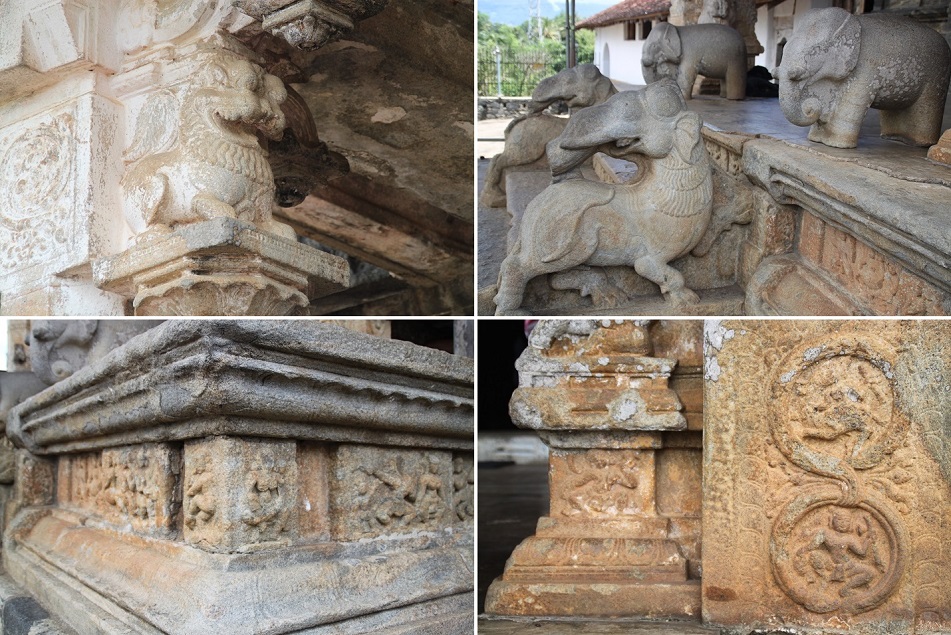








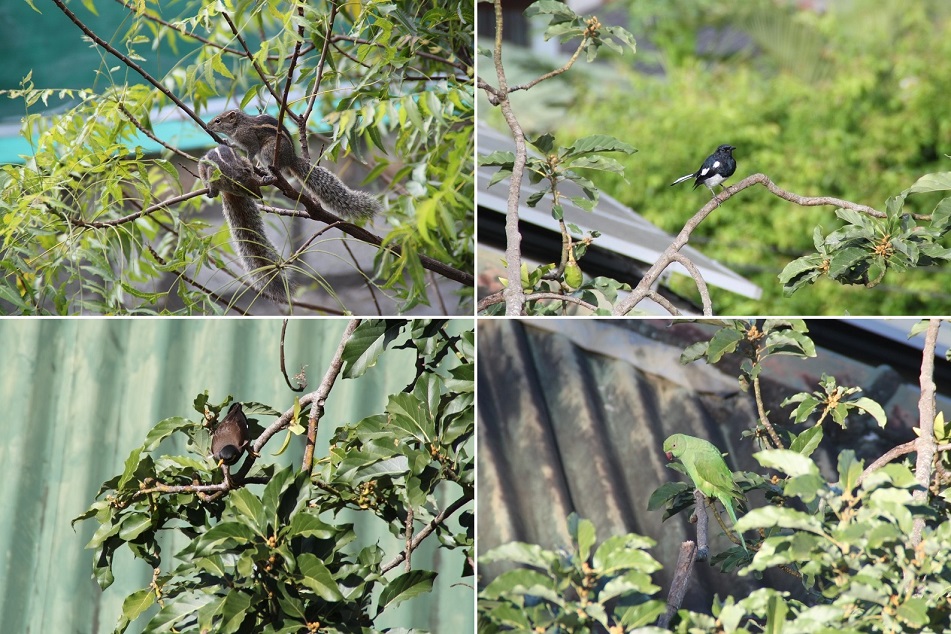
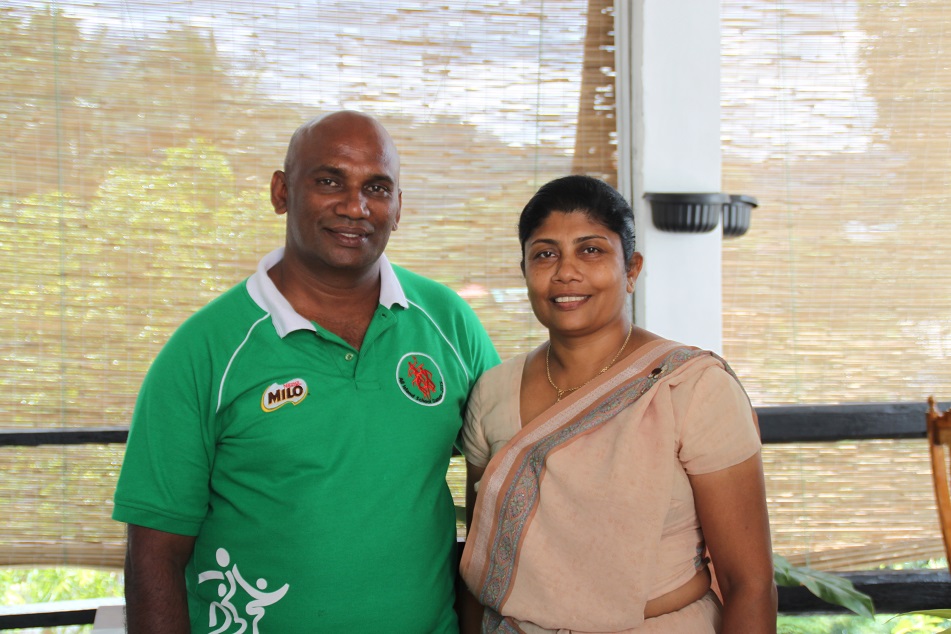



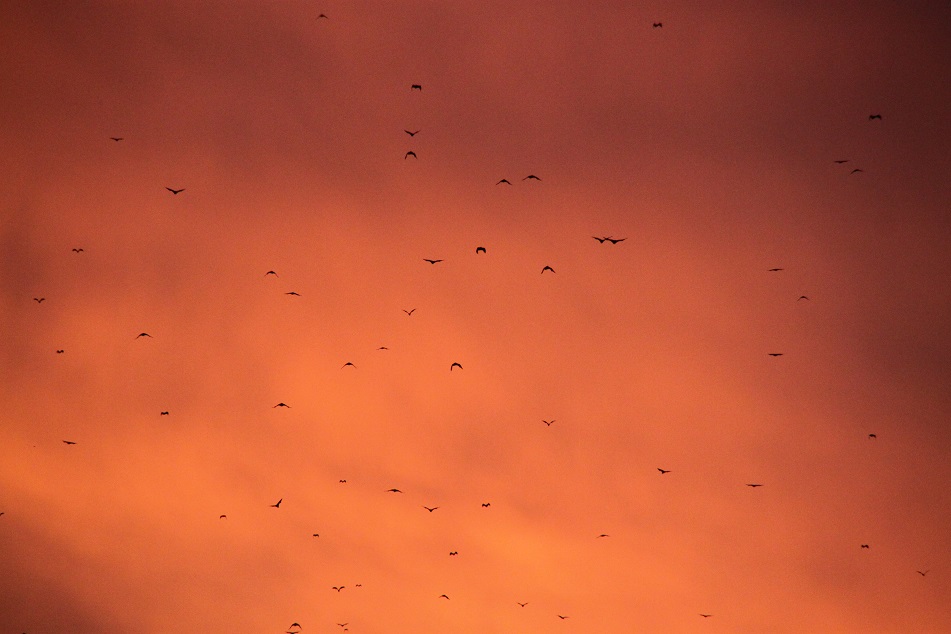
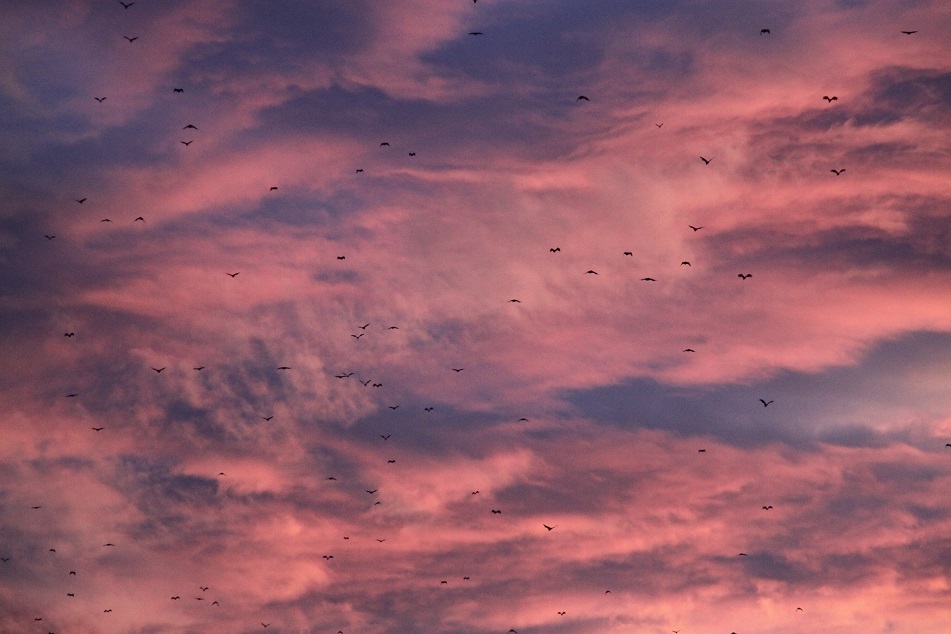
Bama I very much enjoyed your storytelling of your journey and experience. I felt as though I was on the train with you. Sorry to hear you developed a cough. Traveling is not always easy is it?
LikeLike
Thanks Sue! There are always ups and downs when we travel, indeed. As for our two-week stay in Sri Lanka, it was salvaged by our really gracious hosts in Kandy. When Achini found out that I was sick, she gave me this kind of aromatic oil to inhale. She also made an ayurvedic tea which really helped me recover from the cough.
LikeLiked by 1 person
Like Sue, I really felt part of the train scene with you; I was squirming in my seat just thinking about the (unfair) discomfort and how sometimes a rough start like that can make the subsequent parts all the more delightful! What a fascinating place – the architecture, the greenery, the warm people, and those rich skies. As always, your post is so thorough; it’s impressive how much you gather and ultimately share about all your destinations, from background to detailed descriptions to feelings.
LikeLike
Train journeys in Sri Lanka are always exciting. However, on the day we left Kandy for Colombo, we were pleasantly surprised to see Mahesh and one of his sons showing up at the train station to send us off. They bought us yogurt, which not only tasted really good, but also made the train ride a very enjoyable experience. Meeting the right people always makes a journey even more memorable.
You’re too kind, Lex — but I do appreciate your encouraging comment. I had to restrain myself from including too much information when I was writing the story on Kandy. Otherwise, this would have been a very long post.
LikeLiked by 1 person
A wonderful post, Bama – and one that brought back many fond memories of our time with Mahesh and Achini. If I could find umbalakada in the nearby supermarket then I’d probably try and make the onion sambol. As you already know, turmeric and onion are two of my favorite ingredients so I couldn’t leave Kandy without jotting down the recipe!
LikeLike
Thanks James. I’m glad Achini introduced umbalakada to us because it really made the already tasty onion sambol even more delicious. I was relieved as soon as we had our first meal at the guesthouse because the dishes we had the days before were not like the Sri Lankan dishes I knew.
LikeLiked by 1 person
A wonderful post Bama. Kandy sounds lovely. And that photo entering the Temple of the tooth – fabulous.
Alison
LikeLike
Thanks Alison! I think you would love Kandy. Despite being Sri Lanka’s second biggest city, it feels much more relaxed than Colombo. Plus, its location ensures a temperate climate all year round.
LikeLiked by 1 person
I enjoyed every photo. I hope you relish these adventures. Thank you so much for sharing this beauty.
LikeLike
Thanks for your kind words. Sri Lanka is one of my favorite countries, indeed. If I get the chance to return to the island, I would go in a heartbeat! Since you love flowers, you might be interested in visiting this part of South Asia as well — one of the things I love about Sri Lanka is even in the cities wild animals and plants flourish.
LikeLiked by 1 person
Wonderful post and beautiful pics! I visited Sri Lanka exactly a year ago and absolutely loved every single seconds… and wrote plenty on it too – in case you fancy having a look!
LikeLike
Thanks Stef. Sri Lanka really is a beautiful place, isn’t it? I haven’t heard anyone who didn’t love the country — some people did experience unpleasant things, but in the end their trip always ended up in a positive note, like mine.
LikeLiked by 1 person
I 100% agree! We had an amazing time and we tried to make the most of every moment we spent there! People have been great all over our trip and that has left us beautiful memories of their country 🙂
LikeLiked by 1 person
I always enjoy your pictures of the delicious food you try during your trips. Really interesting point you bring up about the concept of being an independent traveler and not a ‘pampered tourist’ I’m sure your trips were a little uncomfortable but it’s the best way to truly learn about another country and take more out of the culture ☺
LikeLike
Thanks Liz. Maybe one day people not only can upload photos of food, but also its aroma so those who live on the other side of the world can sniff at their laptops or phones. 🙂 Speaking of traveling style, everyone has his/her own preference. But there are certainly quite a lot of benefits traveling independently gives us: from a closer interaction with the locals to ample time for exploration.
LikeLiked by 1 person
Wow. Amazing place, hope to get there someday.. ☺
LikeLike
Sri Lanka in general is a really beautiful country. Hopefully you’ll get to visit this picturesque island nation sooner than later. Thanks for dropping by!
LikeLike
Whoa, such a looonggg way to go to Kandy!!! 😁😁😁
As a flashpacker, i feel you
LikeLike
A few years ago I was actually even more adventurous. Tapi umur emang gak bisa boong.. 😀
LikeLike
Yes, aku juga mengalaminya, usia mengubah gaya 😀
LikeLiked by 1 person
Great images!
LikeLike
Thanks! Glad your enjoyed them.
LikeLike
Just reading this now as even though we have lived here for six months, Kandy has eluded us…. so it was really nice to see it all through your eyes. I love the bat photos! Fabulous!
Great post.
Peta
LikeLike
Glad you enjoyed this, Peta. Kandy was nice in both of my visits to Sri Lanka. It’s one of those places where I can see myself returning again and again in the future. Its history, ancient sites, and overall ambiance are things that keep me coming back for more. Thanks!
LikeLike
Great post Bama, I think our train journey to Kandy went a bit smoother than your one, yours sounded a bit of an ordeal.! Kandy is a lovely town. It was Perahera when we were there which was such a fabulous experience 😁
LikeLiked by 1 person
Thank you, Phil and Michaela. I loved the ambiance and the more temperate climes of Kandy, although in my two past trips to the city I was never there during the Perahera. You were so lucky to witness it!
LikeLike